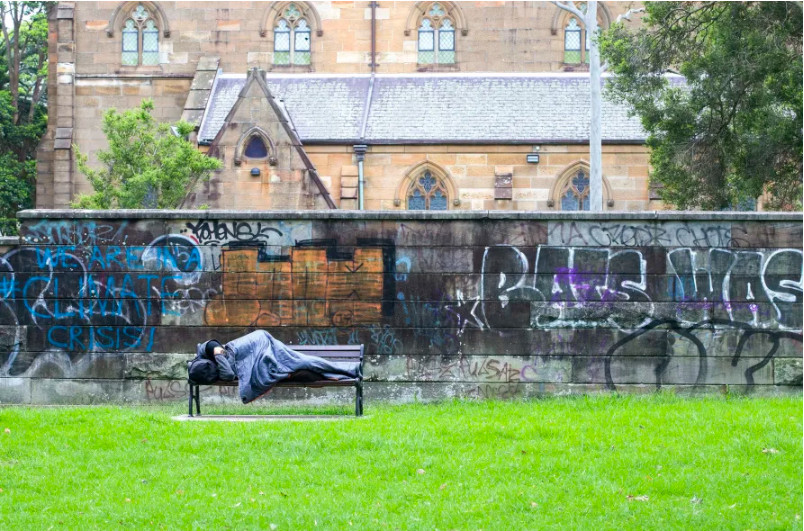
Health & Medicine
Prisons are communities too

The high rate of death soon after release from jail is tragic, but also avoidable. This urgently needs a coordinated, whole-of-government response
Published 11 April 2024
More than 30 million people worldwide pass through prisons every year, including almost 70,000 in Australia.
Studies in many countries have shown that people who spend time in prison typically have poorer physical and mental health compared with people who have never been to prison.

This includes higher rates of infectious diseases, cognitive disabilities, mental illness, substance use problems, chronic and non-communicable diseases, and self-harm and suicide attempts. Importantly, these complex and co-occurring health conditions are often set against a backdrop of trauma, abuse and disadvantage.
These same people are at dramatically increased risk of preventable death after release from prison.
In our recent study, published in The Lancet, we combined prison records with death records for more than 1.4 million people who had been released from prisons in eight countries (Australia, Brazil, Canada, New Zealand, Norway, Scotland, Sweden and the USA) between 1980 and 2018.

Health & Medicine
Prisons are communities too
In the first few weeks after release, we found that alcohol and other drug overdoses were the leading cause of death in all countries except for Brazil, where deaths due to interpersonal violence predominated.
As the length of time between prison release and death increased, the burden shifted to suicide, accidental injuries, and non-communicable diseases including cardiovascular diseases and cancer. Infectious diseases such as HIV accounted for just 3.5 per cent of all deaths.
There are several factors contributing to the high rate of death after release from prison. First, incarceration functions as a filter for poor health and marginalisation – a concept referred to as “the sedimentation of disease” – whereby people who spend time in prison typically have much poorer health than those who do not.
Second, most prisons provide insufficient physical and mental healthcare, despite the United Nations’ Nelson Mandela Rules requiring a community-equivalent standard of care.

Third, investment in transitional care to ensure that people released from prisons are connected to community health and social care providers is woefully inadequate in many countries, including Australia.
Fourth, the stigma of incarceration, combined with interruptions in healthcare, housing, relationships, employment, and other forms of social capital, produces a ‘perfect storm’ of marginalisation and exclusion for these vulnerable individuals.

Health & Medicine
We are leaving people released from prison vulnerable
So, what must be done? In accordance with international standards, prison healthcare providers can take three important steps towards preventing these deaths.
First, they can routinely assess each person’s health status and comprehensively identify healthcare needs when they enter prison. Second, they can provide – free of charge and without discrimination on the grounds of legal status – a standard of healthcare at least equivalent to that available in the community.
Third, they can support a healthier transition back to the community by conducting a comprehensive pre-release needs assessment and coordinating transitional healthcare around the time of release.
Although correctional healthcare providers have a key role to play, reducing preventable deaths after incarceration will require a coordinated, whole-of-government response. Recognising this, in 2019 the World Health Organization (WHO) recommended that prisons should be included in all public health strategies, policies and planning under the banner: “prison health in all policies”.

For example, community healthcare providers can proactively engage with people prior to release, to facilitate continuity of care and prevent relapse to poor health and health risk behaviours.
This is particularly important in Victoria and Western Australia, two states that continue to fly in the face of WHO guidance by funding prison healthcare through a Department of Justice instead of a Department of Health.

Health & Medicine
Giving everyone the right to sport
There are some promising examples of Aboriginal Community Controlled Health Organisations (ACCHOs) providing this sort of in-reach, but while the Australian government continues to exclude people in custody from Medicare subsidies, these models are not scalable.
Housing and homelessness services are also critical to improving health outcomes and preventing deaths after release, given the very high rates of homelessness after incarceration, and the unsurprising association between homelessness and poor health and mortality in this population.
Although Australia’s commitment to reducing the incarceration rate for Indigenous peoples is commendable, this too will be insufficient to reduce preventable deaths in this population. This is because incarceration is largely a marker of pre-existing risk. The increased rate of death after incarceration is, for the most part, not causal.
The best available international evidence suggests that incarceration has little impact on health, either negative or positive. Incarceration is, therefore, all too often a missed opportunity to improve health outcomes, including reducing preventable deaths in those most at risk.

It is often said that ‘what gets counted gets done’, and in Australia (and internationally), deaths after incarceration are not being routinely counted. Informed by previous work in our group, the Australian Institute of Health and Welfare (AIHW) now provides an estimate of deaths after incarceration every three years, based on an analysis of Centrelink records.
However, this approach underestimates deaths and, critically, provides no information on the causes of death, which is essential to inform prevention.

Health & Medicine
Caring for the terminally ill in prison
Australia boasts exceptional infrastructure for routine linkage of administrative data, with the capacity to routinely monitor deaths after incarceration through linkage of correctional and death records. The main impediment to such a system is political will.
This is by no means a uniquely Australian issue, and more research in low- and middle-income countries – where most of the global prison population is detained – is urgently needed.
This is important because our findings largely reflect high-income, western countries and it is likely that the causes of death – and thus opportunities for prevention – will be very different in different country contexts.
In the European region, the WHO has developed a mechanism for routinely reporting on prison health but, due to a lack of data, this system does not currently capture deaths after incarceration.

Routine monitoring of deaths after incarceration and coordinated, whole-of-government responses to prevent them are urgently required.
The high rate of death after release from incarceration, in Australia and internationally, is tragic and avoidable. We can, and must, do more to ensure that people released from prison have an equal opportunity not only to survive but to thrive.
If you or anyone you know needs help or support, please contact Lifeline on 13 11 14.
Banner: Getty Images